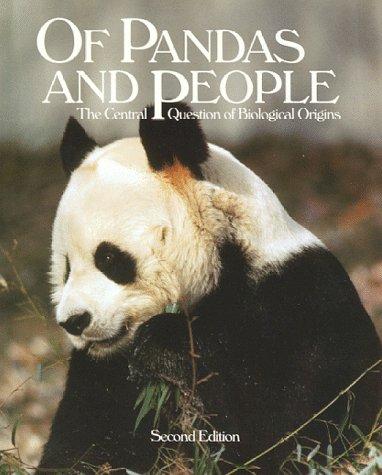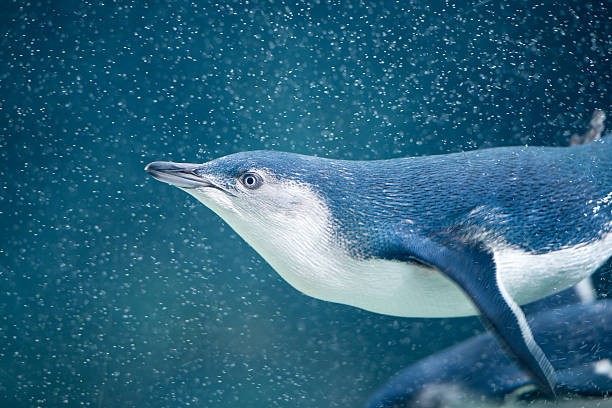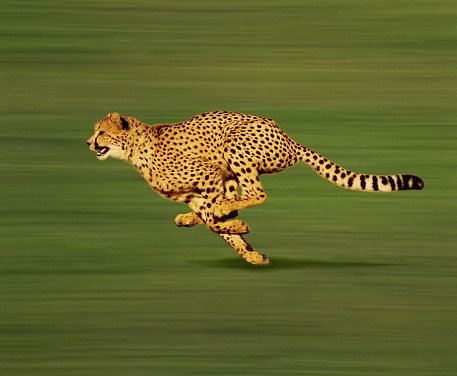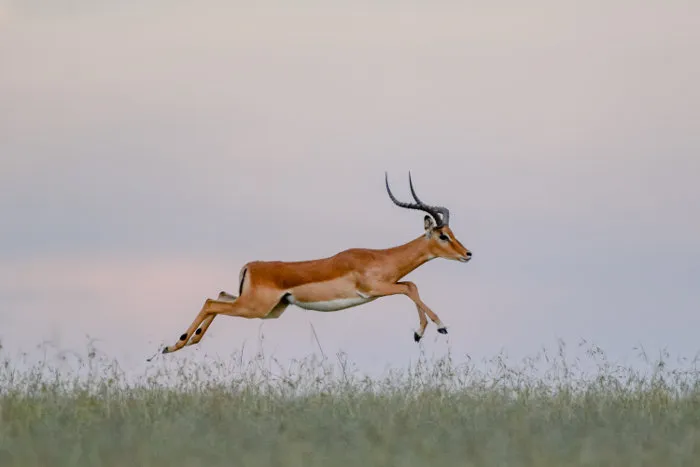What is Intelligent Design?
It probably can be said that Darwin’s proposal of evolution by natural selection as an explanation for the diversity of life on earth is one of the most fruitful scientific theories ever. This idea has spawned many scientific disciplines in addition to the biological sciences, and the discovery of DNA, or deoxyribonucleic acid which contains genes, and its function of replication that are the building blocks of all organisms has further enriched Darwin’s idea.
However, there exists a small coterie of those who refer to themselves as scientists who take issue with the entire fundamentals of Darwin’s theory. Most of them are active Christians of the protestant variety (though not exclusively Christian or protestants) argue that evolution by natural selection cannot explain the diversity of life on earth without the intervention of a creator or a supernatural being. Their work is taken up trying to expose anomalies in natural selection. They distinguish themselves from the creationists who, mostly Christians also, reject the idea of natural selection and argue that all natural species were created separately and within the last 10,000 years. Intelligent Design (ID) advocates, accept a limited version of natural selection though they say the complexity of species requires the work of a supernatural intelligent designer. The ID movement have managed to gain significant financial support enabling them to establish institutions to promote their cause. One of the best-known institutes concerns itself with the publication of literature on Intelligent design and advocates to teach it as a science in US state schools is The Discovery Institute in Seattle, Washington.
This presentation is about ‘Intelligent Design’ (ID) whose origins are said to be found in the works of the British clergyman and philosopher William Paley (1743-1805) who produced many works on the natural world – Paley’s argument a precursor to intelligent design appeared in his, Natural Philosophy [1]where he argued for the existence of;
“… an intelligent designing mind for the contriving and determining of the forms which organized bodies bear”[2]
Paley was, of course, writing this prior to Darwin though Darwin himself was said to have read this work and was initially impressed by it though later rejecting it specifically in his own work. Paley was also famous for his use of the divine watchmaker analogy to explain the regularity of the solar system.[3] .
More recently one of the most significant publications on Intelligent Design is titled Of Pandas and People: The central question of Biological origins”. Edited by Charles Thaxton.[4] This volume was produced as a high school text teaching Intelligent Design as a science alongside evolution. The editor Charles Thaxton is a creationist theorist and was an important person in the development of the idea of intelligent design. The volume consists of arguments against evolution by natural selection in favour of a theory of special creation by an intelligent designer. Some of the arguments ID put forward against evolution are mostly the same those of the creationist position and include the usual so called shortcomings – gaps in the fossil record and a lack of transitional forms. The emphasis of ID however is evolution’s inability to explain the abrupt appearance of new fully formed species.

The adoption of the term intelligent Design rather than creationism was basically to avoid using the term God implying ID is not a religion. Recently the Arkansas house of representatives again ( a similar legislation was defeated in 1981) enacted a law virtually accepting ID as a science to be taught alongside evolution. The law was rejected by the State Senate in a close vote. Fortunately it does not now have to be heard by the US supreme court that is now loaded in favour of conservative judges who may be inclined to approve the move which would be a ground-breaking decision. Also, it would dumb down science teaching in the US.
The belief in Creationism and Intelligent Design and a rejection of evolutionary theory is surprisingly popular in the US and some other countries in the West. In a recent Gallop Poll in the US (2019) 40% of those polled believe in creationism. They believe that God created life roughly within the last 10,000 years and reject evolution as that unproven theory. However, more Americans continue to think that life evolved over millions of years — either with God’s guidance (33%) or, increasingly, without God’s involvement at all (22%).
In Australia the belief in creationism/Intelligent is surprisingly high though not as high as in the US. A 2011 poll by the Australasian Science magazine found 31% believe in creationism, 27% believe God guided evolution and 42% believe in natural evolution, without God.
Following is a list of the major arguments of the creationist/intelligent Design movement.
The Basics of Intelligent Design
A) Irreducible Complexity
- Irreducible Complexity is like that of ‘holism’ developed by psychologists who argue that a holistic or cybernetic system is greater than the sum of its parts. In other words, if one element of the system breaks down so does the entire system as each element in the system is integrated with all the others and must be present for the system to operate. Evolutionary scientists do not deny complexity in organs but insist that such complexity can be shown, as Dawkins does, to evolve in small steps over considerable time, without the need to postulate a design.The flagella motor of certain bacteria are often use by ID to illustrate irreducible complexity and the need to invoke an intelligent designer to explain its complexity.
- The flagella motor of bacteria (a sort of tail that dives the organism like an outboard motor) is favourite example that ID advocates constantly trot out to prove their point of irreducible complexity. The motor tail or tails of a single celled bacteria can move it to places at extraordinary speeds to environments that are advantageous to it.[6] The bacteria also can sense the advantageous environment (where it can absorb nutrients/chemicals for example) where it directs itself so is has movement and sensory functions. The bacteria can also change its structure to enable it to reach goals. This minute bacterium is very complex to the point that Intelligent Designers consider it is so irreducibly complex that it could not have evolved in the usual step by step accumulation of small mutations as it has to be a fully functioning system and can’t function as it does in an incomplete form as evolutionary theory advocates it was. Thus, it must have been created as a fully functioning system – by the supernatural designer.

The solution to this so-called anomaly was in fact partially given by Darwin himself in that accumulation of function is not the only track evolution follows it also involves, as shown in many examples, by fundamental changes in function. This seems not to be taken into account by ID advocates. Whilst biologists agree it is the case that the bacteria in question requires all its parts to be functioning to operate as it does, they argue that evolution has many examples of changes in function as well as complexity. Thus, organs evolved for one function can change to perform another. Thus, before evolving onto its current form such bacteria it may have evolved from an ancestor whose function was altered in later forms.
Penguin Wings

To make this notion of evolution by means of change of function clearer we can look at the functional changes in wing function in birds. Wings evolved in birds and enabled them to take flight in the air, however in the case of a penguin its wings changed function to serve as flippers to swim (or fly) through the water not the air. The wings serve as flippers though they are, anatomically, wings and as birds their ancestry was through evolution as a wing, an organ that allowed many organisms to fly in the air. The penguin’s ancestor probably was able to fly in the air and maybe also swim as is evident in some birds currently. In some sea birds such as the cormorant the wings serve both as organs of flight and as flippers to fly through the water and they are adapted to do both though cormorants after swimming have to dry out their wings after diving in the water before they can fly.
Vestigial Organs

A species of cormorant from the Galapagos (this is pointed out by Darwin) is the flightless as its wings have atrophied (they are referred to as vestigial organs) to almost useless appendages, but it is a consummate swimmer and has developed very strong unusually large webbed feet that propel it strongly through water and it appears to be able to hold its breath for a considerable time. This is unlike the penguin that has changed the wing function to that of a flipper while in the case of the Galapagos cormorant the webbed feet have increased strength to enable ‘flight’ through water. [7] The vestigial wing has not disappeared as it appears not to be too much of a limitation for survival though some biologists find it serves some function in swimming. However, vestigial organs are difficult for ID advocates as they indicate faulty design.
B. Intelligent design does not conform to the accepted scientific methodology of Methodological Naturalism
It is important to make the point that both creationism and Intelligent Design break the accepted rule of scientific methodology, called Methodological Naturalism that is accepted implicitly by most scientists. It is that science is a study of the natural world by natural means and it cannot consider supernatural causes, divine intervention, or supernatural agency as an explanatory principle. Most scientists would agree (even many of those who are followers of a religion) that scientific explanations restrict themselves to the natural world. The reason is that supernatural cause is not an empirical phenomena and cannot be observed, measured, or recorded and if invoked would break a convention that has distinguished science from other forms of knowledge. [8]
Clearly, advocates of creationism and Intelligent design disagree with this methodological principle. Stephen Myer of the Discovery Institute, (a sort of ID think tank) in a paper defending criticism of his position takes issue with the principle of Methodological Naturalism.[9]He claims (correctly) that normal science deliberately excludes reference to the supernatural and this is a problem for him as he claims (and most scientists disagree with him) certain phenomena can only be explained by supernatural means and that the convention of methodological naturalism unfairly excludes his own explanation of the explosion of life forms in the Cambrian period that he considers can only be explained by invoking supernatural intervention. (Meyer’s contention of a Cambrian explosion has now been rejected by most scientists though Meyer rejects this claim). I think Meyer misses the point as science has always operated on the basis of excluding supernatural explanations and it has worked by doing just that. He is correct in pointing out that many scientists are religious, however few if any of them refer to supernatural causes and explanations in their scientific practice. Even going back to Newton who was certainly a committed Christian and even claimed he was doing god’s work did not use supernatural cause to explain his theory of gravity.
Whilst there are other critiques of both creationism and its modern form of intelligent design I will allude to in the next section, as a final comment it has to be said that neither position shows it can be referred to as scientific. They propose a designer in the places where they consider evolutionary theory is deficient and can’t be explained by an evolutionary process (the God of the gaps). In fact most of the work they do is to find limitations to evolution without undertaking much research of their own: basically this is due to the theory itself being limited in generating hypotheses to test. They are not able, or don’t consider it necessary, to provide evidence on the nature of the designer. The proposal of a divine designer appears also to suggest that no mistakes are made, and every design is perfect. This is far from the facts as we have seen as they suggest very imperfect or flawed design, and this for a non-material super intelligence?
Another point to make about supernatural intervention is that ID advocates only focuses on cases they consider can’t be explained by evolutionary theory. Are they implying that an intelligent designer has to be invoked only in those instances where evolutionary theory is deficient? In those cases where evolutionary theory provides satisfactory answers is an intelligent designer still at work? What is the role of a designer in these cases; does the ID just let nature take its course in these cases? ? Thus logically it would follow that ID advocates have to also explain the the role of a supernatural intelligence in all cases even those that can be answered without invoking supernatural intervention. Is it not the case that if a supernatural intelligence can explain everything relating to the diversity of life then we do not need science at all? This is the conclusion that some creationists support – evolution is a myth as all life was created by supernatural forces in10,000 years, we need no further explanation than that.
In the next section I will present an account of two highly evolved species both of whom have extremely sophisticated anatomical and sensory adaptations. I hope this will emphasis the raw nature of evolution its lack of a designing (and a beneficent) intelligence.
The Cheetah and the Impala
The following is inspired from an example in Richard Dawkin’s book “The Greatest Show on Earth’, of what he refers to as the arms race between the evolution of the cheetah and its prey (gazelles). This interaction raises issues relating to ID’s notion of God’s purposes in design.
The Cheetah
To observe the beauty of a cheetah and to see it in action makes it difficult not to speak of a perfect design. It is built for speed and every part of the animal is modified to that end. It is the fastest of all land animals able to reaches 96-127Kph.

The cheetah is a member of the family of big cats though it is quite distinct from the more robust Panthera species that includes the Lion, Tiger, Leopard, Snow Leopard (now a distinct species) and the Jaguar. Anatomically it is structured for speed rather than brute strength characteristic of the Panthera species. It is now rare in Africa and is found in east and North Africa there is also a very rare Asiatic species though few are still are to be found in the wild – some hundreds in Iran and some perhaps in India though this latter is disputed.
Anatomically and physiologically the cheetah is built for speed. It is the greyhound of the big cat family, being the same size and weight as the leopard but with a much sleeker aerodynamic appearance; small head and a very flexible elastic spine allowing it to make bounds of 3 – 7 metres, it has also a large long rudder like tail that serves as a sort of counterbalance assisting it to maintain balance and change direction at high speeds. Its paws a semi retractable unlike other members of the big cat family whose claws are fully retractable this feature allows the cheetah more traction. Though slim in body it has a deep chest to accommodate a extra-large heart and lungs with wide nostrils that allow a fast flow of air and increased oxygen intake for explosive speed. It also has exceptional sight compared even with the larger cats.
However, as is common in evolution, advantages are accompanied by limitations. It can only maintain bursts of speed for minutes as it can overheat very quickly and must rest after this time to recover. Its slim build and small head result in limitations in strength, it is easily killed by lions if they are caught unawares. It also has a weaker bite with few smaller teeth than the other cats and can only overcome smaller prey such as gazelles. Also, it can’t climb as can a leopard to escape a possible predator.
I would like at this point to raise the issue of design in relation to the cheetah. It is as indicated not a perfect design there are inbuilt weaknesses and disadvantages because of its advantages of speed. Is it possible that a human designer could do better? The question also arises relating to the purpose of the cheetah’s design as this is crucial to human design planning. In evolutionary terms, the purpose of the cheetah’s speed is clear to survive and to survive it needs to be fast as its prey are basically antelopes and other small prey who have evolved to survive as well and outwit the cheetah. A major prey of cheetah’s are smaller members of the antelope family gazelles. I will now address the features of the largest of the cheetah’s prey and equally magnificent, the Impala
The Impala
The Impala is a member of the Antelope family and it is only found in Southern and part of Eastern Africa. It is probably the largest prey of the cheetahs and can reach 92 centimetres (nearly 3 feet) at the shoulder and up to 80 kg (168 pounds) in weight. Males have impressive horns up to 1 metre. There are two species the Black Faced Impala being significantly larger than that shown above. The impala’s physical abilities are as impressive as that of the cheetahs. It has two types of features in speed that are impressive – it can jump up to 3 metres (9.8 ft), over vegetation and even other impala, covering distances of up to 10 metres (33 ft); the other type of leap involves jumps (called stotting) in which the animal lands on its forelegs, moves its hind legs mid-air in a kicking fashion, lands on all fours and then rebounds and it can change direction fast in different directions. Of all the antelopes it is the fastest and highest leaper.

One of the Impalas’ major predators is the cheetah which can run faster and change directions almost as effectively though Lions, leopards and hyenas catch them if they surprised them unawares. While the cheetah can run faster the impala has more staying power and can outdistance a cheetah if alerted soon enough. The impala has a very acute sense of smell and hearing and a healthy adult Impala if alerted of the presence of a predator is almost impossible to catch.
Richard Dawkins talks of an evolutionary arms race between the cheetah and the sleek small members of the antelope family especially the Impala that has evolved traits of speed and other senses that enable them to mostly out run and outwit fast predators such as cheetahs. The cheetah’s traits of speed and maneuverability must keep up with that of the impalas. The cheetah’s success in running down impalas is only successful infrequently and, most chases end in failure. The “arms race” analogy is apt as each animal, the cheetah and the impala, have an evolutionary history of each keeping one step ahead of each other. He balance is crucial as if one achieves an advantage then there is imbalance to the detriment of both.
I think it is relevant to ask what purpose does this arms race serve an intelligent designer? Is the designer conveying some sort of message to us – what is it? Is the designer supporting the interest of the Impala or the Cheetah? Or is he simply playing a game?
The ‘arms race’ analogy is perfectly in line with evolutionary expectations. The genes of both species are being passed on. It is at some cost to individuals of both species. Healthy impalas may escape predation for a time though those who grow old, become disabled and the young are more prone to be taken. The same applies to the cheetah individuals who are old, sick or disabled and especially cubs are vulnerable with only about ten percent surviving to maturity. It is in a sense a precarious existence for both species, as it was for early humans, but does the creator care? Why does the benevolent creator allow this misery to prevail for most species most of the time?
Is this the answer we must accept?
“For My thoughts are not your thoughts,
“For as the heavens are higher than the earth,
So are My ways higher than your ways
And My thoughts than your thoughts.[10]
So there is an explanation we humans are not permitted to know about.
It is up to us human beings not gods to act to preserve the magnificence of the diversity of life and ensure the survival of species.
[1] Paley, William (1809), Natural Theology: or, Evidences of the Existence and Attributes of the Deity (12th ed.), London: J. Faulder
[2] Retrieved 13/5/21 https://en.wikipedia.org/wiki/William_Paley
[3] Richard Dawkin’s ’The Blind Watchmaker’ was inspired by the Paley watchmaker analogy
[4] Thaxton Charles (1989) (2nd edition 1993) Of Pandas and People: The Central Question of Biological Origins, Foundation for Thought and Ethics TX USA
[5] https://www.youtube.com/watch?v=2X1iwLqM2t0 Retrieved 15/5/21
[6] See https://research.csiro.au/synthetic-biology-fsp/evolution-or-intelligent-design-the-story-of-the-bacterial-flagellar-motor/ Retrieved 14/5/21
[7] The photo shows a Galapagos cormorant drying out its wings though it doesn’t need to, it is a function of its previous ancestry as a flying bird which remains as a habit.
[8] This is an excellent and clear paper on both methodological and philosophical naturalism https://infidels.org/library/modern/barbara_forrest/naturalism.html accessed 19/5/21
[9] https://biologos.org/series/reviewing-darwins-doubt/articles/reviewing-darwins-doubt-response-by-stephen-meyer accessed 15.5.21

